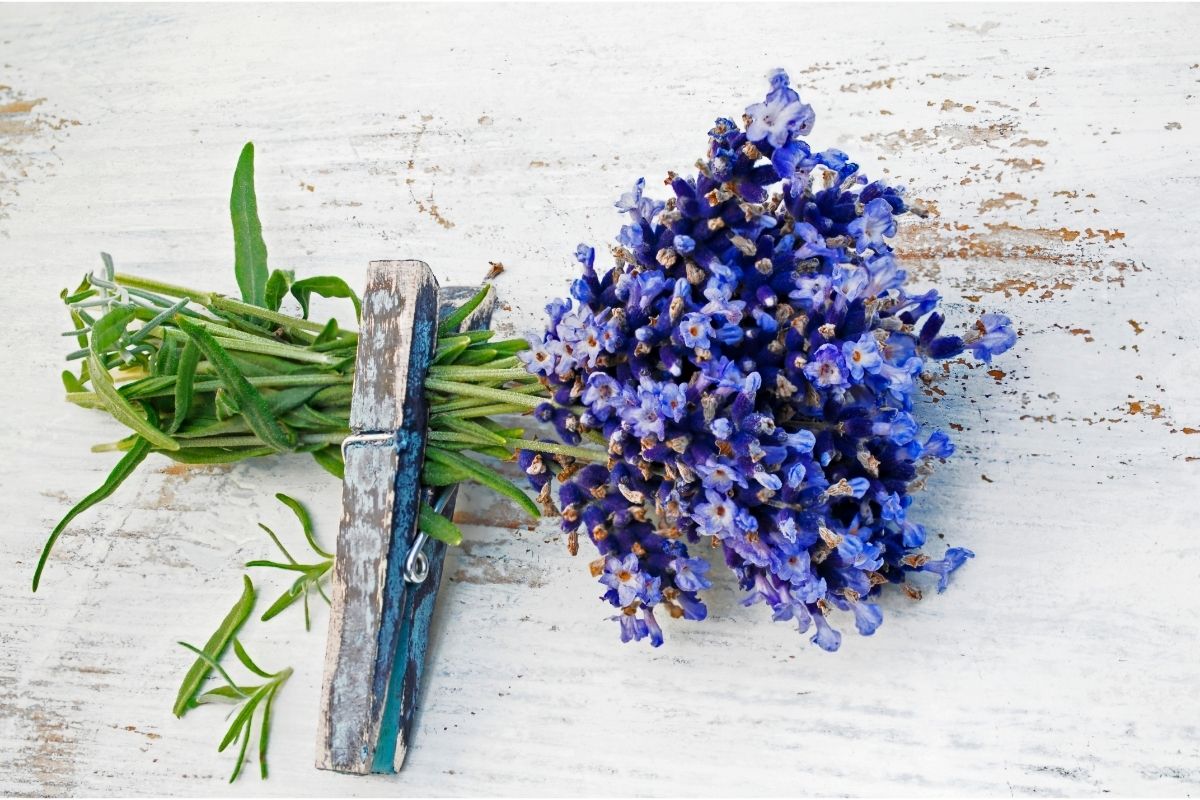Prune lavender is an excellent plant for adding color, fragrance, and happy bees to your garden. It is easy to grow and will be happy in a variety of environments. It is not surprising that it is so popular all over the world!
But because it is so easy to grow it does need to be pruned fairly regularly. It can be difficult to know how to prune and when to prune to keep your plant happy.
Keep reading for the ultimate lavender pruning guide!

When To Prune
Knowing when to prune is just as difficult as knowing how to prune. Ideally, you want to prune differently in your lavender’s first year as it will not be fully mature. This will help set your plant up for success in your garden. After that, you can prune lavender in the spring, or winter.
Keep in mind that, while lavender is super hardy, you may need to alter your technique slightly to keep your lavender plant healthy and produce enough flowers and associated foliage.
First Year Pruning
A lavender plant that is around one year old will only require a light trim throughout its first year. Make sure that you follow these steps to prevent your plant from looking ‘leggy’ or woody in the future.
Remember that you do need to prune to encourage new growth and to help maintain your lavender plant’s shape. You may find it easier to maintain the shape by pinching off new shoots to prevent bushiness as and when they appear, rather than saving it for a single prune.
Finally, we recommend that you do the first prune in the summer after your lavender plant has flowered.
How to prune:
- Cut each stem back by no more than a third using a pair of clean and sharp shears. You are aiming to remove the flowering head and some green stem.
- It is not necessary to prune hard – this means that you should not cut stems too close to the woody base. You need to leave enough green so that the plant can recover and grow again when the season starts.
- It is best to create a dome or circular shape when you are pruning. Do this by cutting down the sides of your lavender plant more severely than the top – you need the top to stay a little longer.
- Keep in mind that you may notice a second rush of flowers after you have pruned. This is completely normal. You do not need to prune back until after they have died, but you do need to cut them back before cold weather sets in for good.
Mature Plant Pruning
You will find that lavender can quickly establish, so a plant can be considered mature from its second year. You need to make sure that you maintain a pruning routine to keep your plant in a manageable shape.

It is generally recommended that you prune in two stages throughout the year – once after the flowering, and then again during the spring. That said, remember not to prune too harshly after the flowers have died back as this will make it difficult for your plant to survive in the coming colder weather.
Remember that lavender is an evergreen plant, so it needs some greenery all year. A plant that has been cut back to the woody stems does not have enough leaf coverage to keep the plant alive.
With this in mind, it is best to leave pruning until next summer if you miss the window. This is especially important for more species like Spanish, French, or Italian lavenders.
Don’t forget that you can keep your pruned lavender flower heads for culinary, medicinal, or therapeutic purposes. If you want to get the full benefits of lavender, we recommend that you prune it when the flowers are in bloom. Simply gather the trimmed stalks and tie them into bunches before leaving to hang upside down.
How to prune a mature plant:
- As an established lavender plant can quickly grow, it will be far quicker to prune by grabbing handfuls of stems and cutting away around a third. As always make sure you use clean and sharp shears.
- Remember to leave enough greenery on the stems so the lavender can survive winter.
- Aim for a domed shape as far as possible. This shape has the most visual appeal and will help keep your plant from looking bushy.
Related: Laid Up In Lavender: 21 Different Types Of Lavender
Spring Pruning
Want to get rid of woody stems and encourage new growth? Spring pruning is the way to go. It is recommended that you prune earlier in the spring to combat woodiness as this will give your plant enough time to become reestablished before flourishing in the growing season.
How to prune:
- As it is important not to cut the woody parts of a lavender stem, you must work a little more slowly than you would at other times of the year. Take a single stem and look at it. You need to identify where the wood ends and where the green stem begins.
- Use sharp and clean shears to cut roughly 2 inches above the end of the wood.
- Because you do need to work carefully to avoid the wood part of the stem, we do not recommend cutting handfuls at a time. Cutting individual stems does take a little longer but is far better for the health of your plant.
- Again, aim for the domed shape as far as possible to keep your lavender plant looking beautiful.
- Do not hesitate to remove any diseased or dead stems. These will not come back to life and may ruin the overall look and health of your plant.
Pruning Woody Lavender
No matter how careful you are, sometimes your lavender plant just gets a bit woody. Even with regular pruning, a plant that is a couple of years old will develop wooden stems. But don’t worry! It is possible to rejuvenate your plant and get it back to its normal self.
Usually, you are told to replace your lavender plants after around 5 years because they get leggy and difficult to maintain. But you can cut down to the wood to inject some youthfulness back into your plant.
Yes, this is the opposite of what we have said above so remember to only prune into the wood when you have a leggy plant in need of taming!
If you choose to prune this way, it is essential that you only prune above the lowest growth node in your lavender plant. This means that there are still signs of life in your plant below that point and your stems can easily recover. Prune any further down, and you are likely to kill the plant.
Related: How To Propagate Lavender: Everything You Need To Know
Winter Pruning
Your plant should be cut back into a nice and neat shape before the coldest times of the year. This will give your plant the best chance of survival as it will have enough structure and greenery left in it to come bouncing back in the spring as the growing season begins.
Avoid pruning after the fall at all costs. That said if you are fortunate enough to live in more temperate climes or have a very hardy plant you could do ok if you prune in winter. The key thing to remember is that you need to leave some green stems and leaves behind.
But why prune? If you have already pruned at the recommended times of the year, your lavender should still be in a pleasant and neat shape. Lots of seed-eating birds feed on lavender seed heads, so it may be better for the surrounding wildlife for you to leave your lavender alone until spring.
Final Thoughts
Pruning your lavender plant is an essential element of their care.
Pruning will encourage new growth, prevent legginess and woodiness, meaning that you always have a gorgeous lavender plant in your garden. Some people are erroneously afraid of pruning lavender – the only thing you need to remember is that you do not cut the wood.
Trimming the stems anywhere above the wood line will guarantee new growth and a reinvigorated
plant.
Editor’s Recommendations
13 Easy Cat-Safe Plants For Your Innoxious Indoor Garden
15 Best North Facing Window Plants For A Green Oasis In Shady Room
16 Best East Facing Windows Plants – The Stars Of Rising Sun







